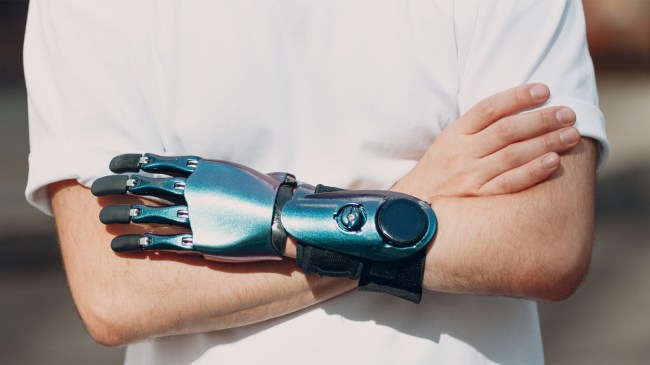Getty Image

Audio By Carbonatix
Scientists claim human bodies already know how to regrow a limb because they have already made one during a body’s development. In a new study, they say that, much like salamanders, starfish and Deadpool, humans have a regenerative ability that we just haven’t been able to harness yet.
They believe that by studying axolotls, animals that have the ability to regrow severed limbs, we will eventually be able to unlock that same ability in humans. According to molecular biologist James Monaghan of Northeastern University and his team, an axolotl knows that it needs to regrow a limb due to something called positional memory. The National Library of Medicine defines positional memory as “a property of steady-state cells (e.g., connective tissue cells), with the potential to maintain information over a lifetime.”
Monaghan and his team have discovered that an axolotl’s ability to regenerate a limb begins with retinoic acid and the enzyme CYP26B1. Both of these chemicals are also found in the human body. An axolotl, however, has figured out how to use these chemicals in a way that humans haven’t yet, but that the scientists think can be figured out in the future.
“It could help with scar-free wound healing but also something even more ambitious, like growing back an entire finger,” Monaghan said in a press release announcing their findings. “It’s not out of the realm [of possibility] to think that something larger could grow back like a hand.”
In their study published recently in the journal Nature Communications, the scientists “discovered the animals have a gradient of retinoic acid signaling. In the arm, for example, this means axolotls have more retinoic acid in their shoulders –– and less of the enzyme CYP26B1 that breaks down the molecule –– and less retinoic acid in their hands. The retinoic acid acts as a cue to the regenerative cells, called fibroblasts, telling them what to grow back and how much to grow back.”
Understanding the signal for regeneration is a major step toward applying these lessons to humans, Monaghan says. Humans have retinoic acid and fibroblasts too, but unlike the axolotl’s body, where signals are getting sent between all these biological players, the cells in the human body are just not listening in the same way.
When we injure an arm, our fibroblasts lay down collagen and start making a scar. In axolotls, the fibroblasts listen to retinoic acid and “turn back time just a little bit,” growing a new skeleton.
“If we can find ways of making our fibroblasts listen to these regenerative cues, then they’ll do the rest,” Monaghan said. “They know how to make a limb already because, just like the salamander, they made it during development.”
Content shared from brobible.com.

